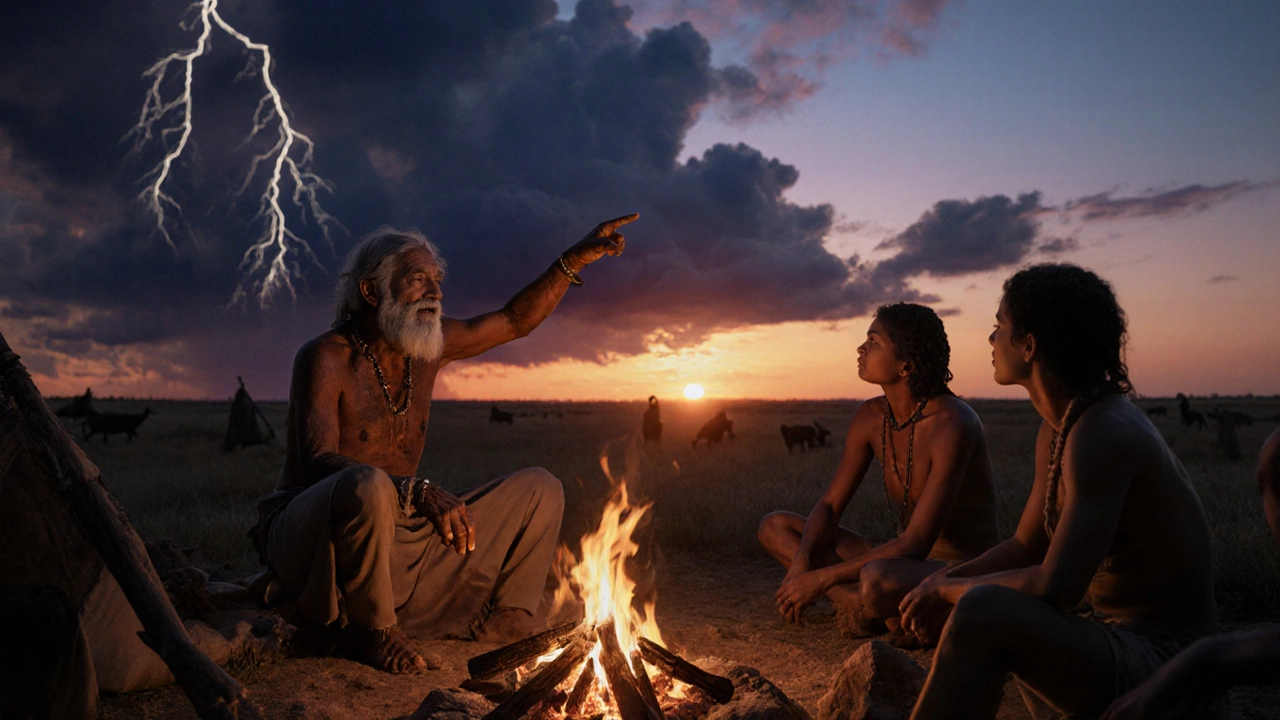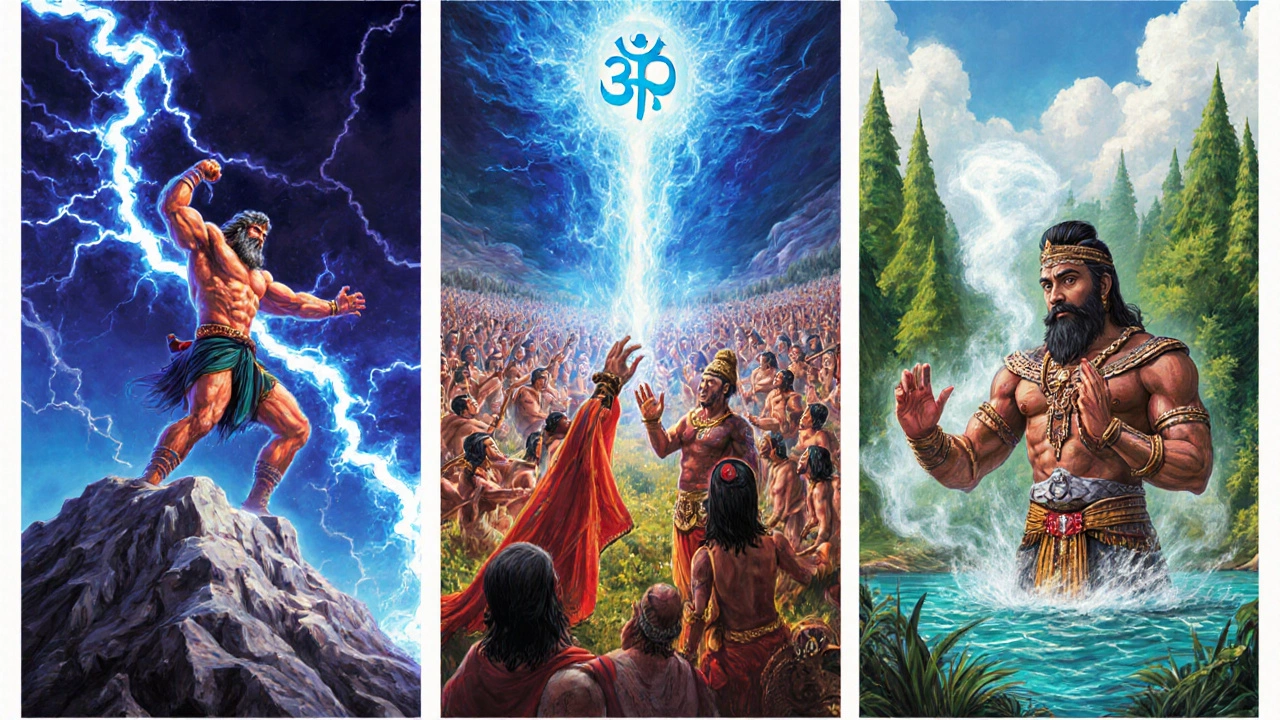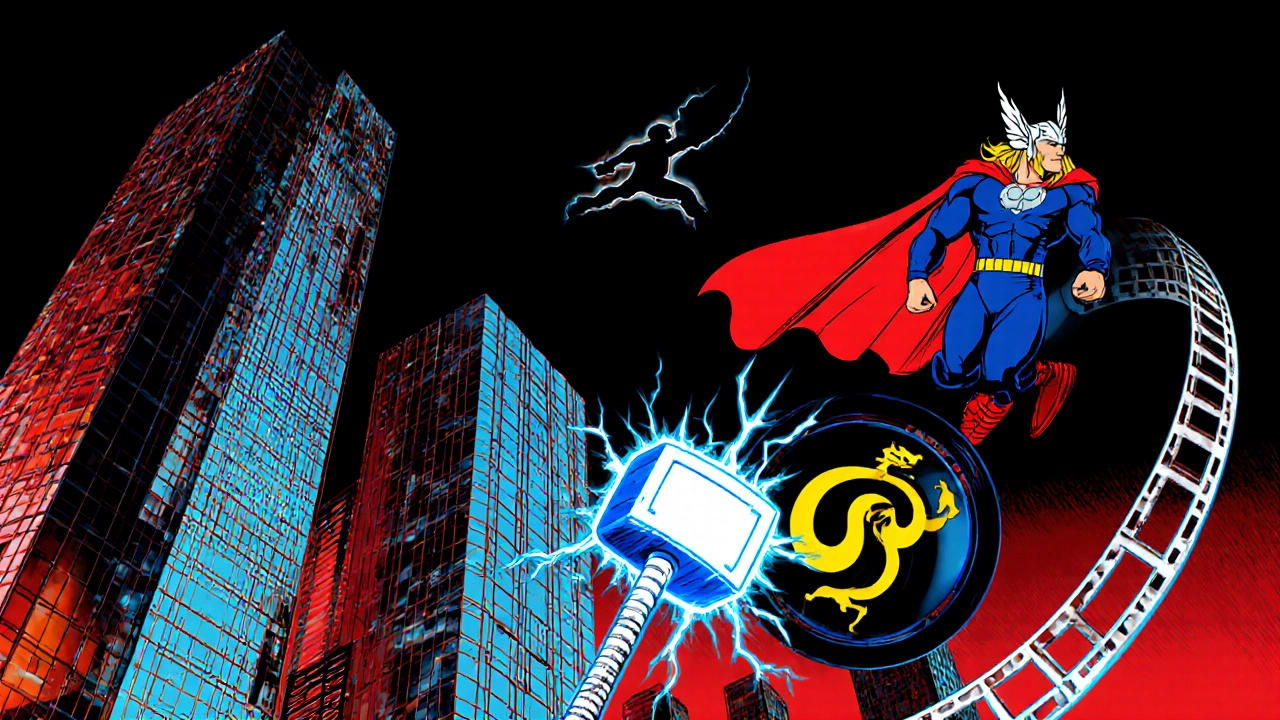
Mythology Explorer: Identify Core Aims
Select a myth or story below and choose the core aim(s) it addresses:
Natural Phenomena
Explains events like storms, earthquakes, or celestial movements
Moral & Social Order
Teaches values, ethics, and societal rules
Human Origins & Identity
Explores who we are, where we come from, and our purpose
Analysis Results
Key Takeaways
- Mythology seeks to explain natural phenomena, moral/social order, and human origins.
- Each explanation reflects a culture’s environment, values, and identity.
- Understanding these three aims helps decode symbols, rituals, and recurring archetypes.
- Myths are living narratives that adapt to new knowledge while preserving core meanings.
- Analyzing myths through these lenses reveals common threads across continents.
People have always asked: why does the sun rise? why do we fight? why are we here? Mythology is the ancient toolbox societies built to answer those big questions. In the first few centuries of writing, storytellers turned mysterious forces into characters, events, and moral lessons. Today we can look at any myth and see three clear goals it tries to meet. Let’s break them down, see how they overlap, and discover why they still matter.
Mythology is a collection of traditional stories that a culture uses to explain the unknown, teach values, and define identity. While the term covers everything from creation epics to local folk tales, the underlying purpose stays remarkably consistent.
1. Explaining Natural Phenomena
Before telescopes and weather radars, people needed a way to make sense of thunder, earthquakes, and the changing seasons. Natural phenomena observable events like storms, volcanic eruptions, or celestial movements were mysterious and sometimes deadly. By assigning them personalities-gods, monsters, or spirits-communities could predict, appease, or at least feel less powerless.
Take the Greek thunder‑god Zeus. Every lightning strike was thought to be his angry shout, a reminder that the sky held a ruler who demanded respect. In Norse myth, the thunder‑drum of Thor’s hammer Mjölnir explained the roaring storms that battered the fjords. In Indigenous Australian stories, the Dreaming explains the pattern of rain and drought as actions of ancestral beings moving across the land.
These stories often include a causal chain, something like:‘When the deity slams his weapon, the clouds part and rain falls.’ Even if the scientific explanation later replaced the divine one, the narrative gave early societies a framework to plan agricultural cycles and communal rituals.
2. Defining Moral and Social Order
Every culture needs a rulebook, whether it’s written on stone or whispered in bedtime stories. Myths become that rulebook, turning abstract ideals into vivid, memorable scenes. Moral lessons guidelines about right and wrong behavior conveyed through story are woven into tales of heroes, tricksters, and punishments.
Consider the Indian epic Mahabharata. The story of the Pandavas versus the Kauravas isn’t just a war saga; it’s a deep dive into duty (dharma), loyalty, and the consequences of greed. When the wise sage Vidura advises his king to act ethically, the narrative teaches that even rulers must bow to moral law.
In many African mythologies, the trickster spider Anansi uses cleverness to steal food but often faces retribution, showing that cunning without compassion leads to community loss. These patterns reinforce social cohesion: they reward generosity, humility, and respect while warning against hubris, betrayal, and selfishness.

3. Exploring Human Origins and Identity
Beyond weather and ethics, myths grapple with the biggest question of all: who are we? Origin stories narratives that describe how the world and its inhabitants came to be give meaning to existence, explain why we differ, and anchor groups to a shared past.
The Māori creation tale tells of the god Tāne separating sky and earth, then breathing life into the first humans. That act links every Māori person to a divine creator and a specific landscape, cementing a sense of belonging that goes beyond genetics.
Similarly, the Sumerian Enuma Elish presents the world’s birth from chaotic waters, with the god Marduk ordering the cosmos. The story sets up a hierarchy that justifies the city‑state’s political structure and its people’s role as caretakers of that order.
When myths address questions like “Why are we mortal?” or “What happens after death?” they provide comfort, fear, or motivation. The Egyptian journey through the Duat, guided by Osiris, offered a template for funerary rites that reinforced the value of living a just life.
Comparing the Three Core Aims
| Goal | Typical Narrative Elements | Key Benefits for Society |
|---|---|---|
| Explain Natural Phenomena | Divine beings, cosmic battles, weather‑controlling artifacts | Predictive rituals, communal cohesion during crises, environmental respect |
| Define Moral & Social Order | Heroic quests, trickster punishments, divine law | Shared ethics, social stability, conflict resolution frameworks |
| Explore Human Origins & Identity | Creation myths, genealogies, afterlife journeys | Sense of belonging, cultural pride, existential comfort |
How Myths Shape Modern Culture
Even in the age of science, the three aims still echo in movies, video games, and branding. Superhero comics use cosmic origins (e.g., Thor’s hammer) to explain natural forces. Corporate narratives often frame missions as heroic quests, mirroring ancient moral tales. And national anthems sometimes reference creation myths to foster unity.
Because myths are adaptable, they absorb new knowledge without losing their core purposes. The Maori story of Māui pulling up the North Island now coexists with modern marine biology, each offering a different lens on the same event.

Common Misconceptions About Mythology
- Myths are just “false stories.” They are symbolic truths that convey cultural values, not literal reports.
- All myths serve the same purpose. While many overlap, each tradition emphasizes different goals based on its environment and history.
- Myths are static. They evolve with language, migration, and technology, constantly re‑interpreting the three core aims.
Frequently Asked Questions
Why do many cultures have flood myths?
Floods are dramatic natural events that threaten survival, making them perfect symbols for divine cleansing, renewal, and moral reset. They often illustrate the first core aim-explaining a powerful natural phenomenon-while also delivering a moral lesson about hubris or disobedience.
Can modern stories replace ancient myths?
Modern narratives can serve the same functions: science‑fiction explains cosmos mysteries, superhero movies teach ethical choices, and origin stories in brand marketing create identity. They are the contemporary echo of the three timeless goals.
How do myths influence personal values?
Because myths embed moral lessons in memorable characters and events, they shape how individuals judge right and wrong. A child who grows up hearing the story of the diligent ant versus the lazy grasshopper may internalize the value of hard work without formal instruction.
Do all mythologies address the three core questions?
While the emphasis varies, most surviving mythic corpora contain at least one tale about the natural world, one about proper conduct, and one about origins or destiny. Even fragmentary traditions usually reveal traces of all three.
What’s the best way to study myths critically?
Start by categorizing stories according to the three aims, then compare across cultures. Look for recurring symbols (e.g., water, fire, the trickster) and ask how each symbol serves the explanation of nature, morality, or identity. Pair this with archaeological and linguistic context for a fuller picture.
Next Steps for Curious Readers
- Pick a myth from a culture you know little about. Identify which of the three goals it tackles.
- Write a short reflection on how the story’s moral aligns (or clashes) with your own values.
- Compare that myth’s natural‑world explanation with a scientific fact you’ve learned recently. Notice the overlap or tension.
- Explore a modern work-film, novel, or game-and trace its roots back to an ancient myth’s three core aims.
- Join an online discussion forum or local reading group focused on mythological studies to share insights.
By actively dissecting myths through these lenses, you’ll see how ancient storytellers tackled the same questions we still ask today, and you’ll gain a richer perspective on the stories that shape our world.


